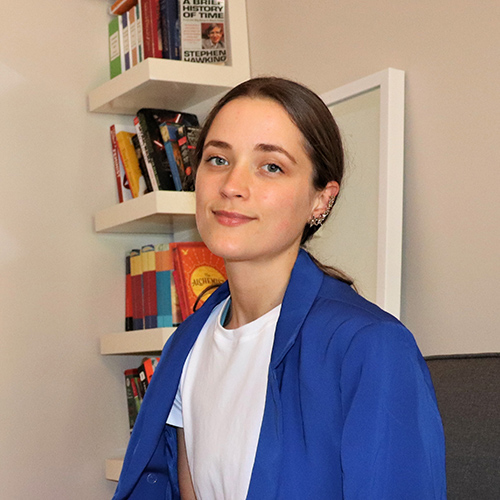
On December 15, 1882, Australia’s first female trade union, the Tailoress’ Association of Melbourne, was established.
This marked the beginning of the gender equality movement in Australia, and was shortly followed by the nation’s first women’s suffrage society.
Since then, women’s rights activists have fought tirelessly for the right to vote, work, access contraception, paid maternity leave, and so much more.
Enormous progress has been made, but we are far from the finish line.
Sponsored
Here are five serious consequences of gender inequality that prevail today.
1. Domestic violence
Every week, a woman is killed by her current or former partner in Australia, making violence against women a leading cause of illness, disability and premature death.
The statistics are far worse for women with a disability, culturally diverse women, and Aboriginal and Torres Strait Islander women, who are 32 times more likely to be admitted to hospital as a result of domestic violence, according to OurWatch.
Violence against women is serious but preventable, as it is caused by social factors such as gender norms and rigid stereotypes of masculinity and femininity.
Australia’s framework for the prevention of violence against women Change the Story outlines key actions that must be taken to change the gendered drivers of violence against women.
These drivers include condoning of violence against women, normalising disrespect towards women, aggressive male peer relations, and limitations on women’s independence and decision-making.
Extensive research has indicated that harmful gender stereotypes begin early in life, but that collective action truly can change the story of violence against women.
Sponsored
2. The pay gap
While Australia’s gender pay gap hit a record low this year, it has fluctuated between 14 and 19 per cent over the past 20 years. On average, women take home $241 less per week than their male counterparts, equating to approximately $12,000 per year.
According to the Workplace Gender Equality Agency, the pay gap is influenced by recruitment discrimination, conscious and unconscious bias, female-dominated industries attracting lower wages, and women experiencing more disruptions to their careers which can limit progression opportunities.
Women provide the majority of unpaid care and domestic labour even if employed full-time, so workplace inflexibility for caring responsibilities, especially in senior positions, creates barriers to women’s financial success and independence.
3. The pink tax
Women not only earn less for the same work, they also pay more for many products and services.
Sometimes referred to as the pink tax, until recently this included Goods and Services Tax (GST) on female sanitary products, despite no taxation on products like Viagra or condoms. This tax has now been lifted from sanitary pads and tampons, however prices still vary greatly between men and women’s toiletries, clothing, and personal services such as haircuts.
Independent movement group GetUp has launched a petition to close the gender price gap, and published examples of price inflation for women’s products and services. Examples include identical shirts priced at $49.95 for men and $59.95 for women, and a $10 price difference between toy toolboxes for children based on whether it was yellow or pink.
The difference may seem minor, but a lifetime of paying more for regularly used items can have serious impacts for women’s financial wellbeing.

4. Homelessness
Barriers to financial independence create serious risks for homelessness, particularly for single mothers and those reliant on part-time wages or parenting payments.
Women are retiring with less superannuation than men, leading to a 30 per cent increase in homelessness among older women.
Domestic violence also greatly increases the risk of women becoming homeless, and is the most common reason women present to Australia’s main government homelessness program, the Supported Accommodation Assistance Program (SAAP).
The last Census recorded almost 50,000 women as homeless in Australia.
5. Physical and mental health
Women are less physically active than men at all life stages, and participation declines with age.
Exercise is an important factor for physical and mental wellbeing, so it’s concerning that girls start to avoid exercise in early adolescence because of social pressures and poor body image.
Nearly half of women aged over 25 lack confidence in gyms or sporting clubs, and about 40 per cent of women feel embarrassed to exercise in public.
Gender equity also has serious impacts on mental health. Body image pressures, gender expectations and other factors contribute to a prevalence of anxiety and depression in women two to three times the rate of men.
Fear of violence or harassment prevents women feeling safe in their own communities, which influences women’s use of public spaces such as avoiding walking home from work or using public transport, further compounding physical and mental health risks.
More work to be done
Despite astonishing progress being made to date by female rights activists, the work is far from complete.
If you’re wondering how you can continue the movement and find your inner activist, consider signing up for updates from the International Women’s Development Agency.
And if you’re in a position to, hire women and support female-led businesses.
Editor’s note: This article was originally published on November 6, 2019 but has since been updated to include new content.
Sponsored
We have a request
SHE DEFINED’s journalism is independent and we’re committed to elevating the voices of women by putting them front-and-centre in our stories and giving them a platform to speak up.
Quality journalism and editorial content takes time, money and resources to create, which is why your support matters. We don’t have a paywall or exclusive subscriptions because we believe in keeping our stories open to everyone.
Help support our mission by making a financial contribution today.

Emma Lennon
Emma Lennon is a passionate writer, editor and community development professional. With over ten years’ experience in the disability, health and advocacy sectors, Emma is dedicated to creating work that highlights important social issues.






